In an Excel worksheet, we enter data in different cells. Of them, some cells contain information those are unchangeable or may contain formula, etc. As those cells are sensitive, we need to protect them. We can protect cells in different ways. But in this article, we will show some examples of Excel VBA to protect a range of cells.
Excel VBA to Protect Range of Cells: 3 Examples
We will show 3 VBA examples to protect a range of cells in different situations. We have a dataset that contains formulas in the Savings column, and the rest are only values.
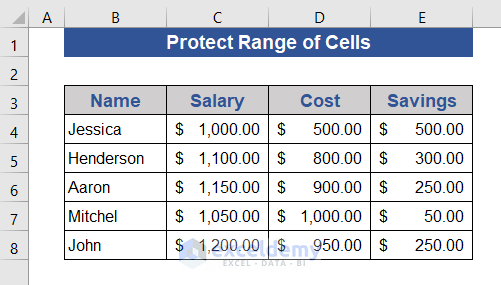
1. Protect a Certain Range of Cells
In this example, we show how to protect the whole dataset. We will put the data range in the VBA code. When we run the code those cells will be in protected mode.
Steps:
- Now, go to the Sheet Name We will get Sheet Name at the bottom bar of any sheet.
- Press the right button of the mouse.
- Choose the View Code option from the Context Menu.
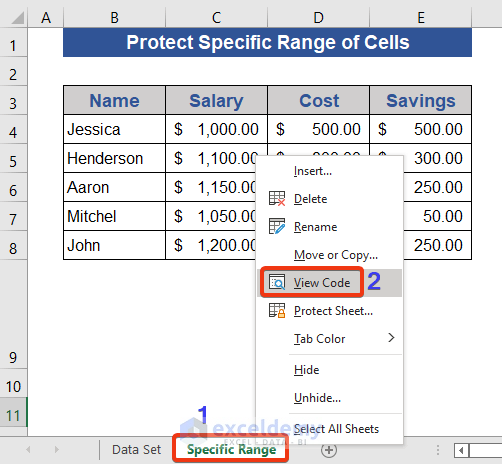
- We enter the VBA window. Choose Module from the Insert tab.
- VBA module window appears now. We will write our VBA code here.
- Copy and paste the following VBA code on the module.
Sub Protect_Range_Cells()
Dim range_1 As Range
Set range_1 = Range("B4:E8")
Cells.Select
Selection.Locked = False
range_1.Select
Selection.Locked = True
ActiveSheet.Protect DrawingObjects:=False, Contents:=True, Scenarios:=False
End Sub- Press F5 to run the VBA code.
- Now, click on any of the cells of the inputted range.
A warning shows that the cell is in protected mode. But we can edit or insert data on other cells.
Code Breakdown:
Dim range_1 As RangeDeclare a variable of the range type.
Set range_1 = Range("B4:E8")Set the value of the variable.
Selection.Locked = FalseUnlocks the selected range. The False comment unlocks the range.
range_1.Select
Selection.Locked = TrueSelects range_1 and locks the selection.
Read More: How to Lock and Unlock Cells in Excel Using VBA
2. Protect Cells with Password from Selection
In this example, we will protect a range of cells from selection with a password.
Steps:
- First, select the cells of the Cost and Savings columns of the worksheet.
- Then, go to the VBA module and write down the following VBA code.
- Finally, press the F5 button to run the code.
Sub Protect_Range_With_Pass()
Dim pass_1 As String
pass_1 = "Exceldemy"
If ActiveSheet.ProtectContents = True Then
ActiveSheet.Unprotect Password:=pass_1
End If
ActiveSheet.Cells.Locked = False
Selection.Locked = True
ActiveSheet.Protect Password:=pass_1
End Sub- Now, click any cells of the Cost or Savings columns.
Like the previous, a warning will show. If we put the password, the cells will be in unprotected mode.
- To unlock the cells click on the Unprotect Sheet option from the Review tab.
- The Unprotect Sheet window will appear.
- Insert the password on the Password box and then press OK.
Code Breakdown:
Dim pass_1 As StringDeclare the variable of string type.
pass_1 = "Exceldemy"Set a value of the variable.
If ActiveSheet.ProtectContents = True Then
ActiveSheet.Unprotect Password:=pass_1
End IfAn If condition is applied. Set the value of the pass_1 variable as the password.
ActiveSheet.Cells.Locked = FalseUnlocks the active cells.
Selection.Locked = TrueLocks the selected cells.
ActiveSheet.Protect Password:=pass_1Set pass_1 as the password of the cells of the present sheet.
Read More: Excel VBA to Lock Cells without Protecting Sheet
3. Detect Cells with Formulas and Protect them
We have formulas in the Savings column. We will protect those cells by running a VBA code in this example.
Formulas are shown in the adjacent cells of the corresponding Savings column.
Steps:
- Copy the VBA code below and paste it into the VBA module.
Sub Protect_Formula_Cells()
For Each cell In ActiveSheet.Range("B4:E8")
If cell.HasFormula Then
cell.Locked = True
Else
cell.Locked = False
End If
Next cell
ActiveSheet.Protect "abcd"
End Sub- Hit the F5 button to run the code.
- Then, click any cells of the Savings column that contain formulas.
We see a warning dialog box like in the previous examples.
Code Breakdown:
For Each cell In ActiveSheet.Range("B4:E8")A for loop is applied on the range of the present sheet.
If cell.HasFormula Then
cell.Locked = True
Else
cell.Locked = False
End IfAn If condition applied. If our selected range has any formula then those cells will be locked. And the rest of the cells will be unlocked.
ActiveSheet.Protect "abcd"The active sheet is protected by a password.
Read More: How to Hide Formula in Excel Using VBA
Download Practice Workbook
Download this practice workbook to exercise while you are reading this article.
Conclusion
In this article, we showed VBA examples to protect a range of cells in Excel. We can protect any number of cells with different criteria by following the examples. I hope this will satisfy your needs. Please give your suggestions in the comment box.
Related Articles
- Lock a Cell after Data Entry Using Excel VBA with Message Box Notification Before Locking
- How to Protect Specific Columns Using VBA in Excel
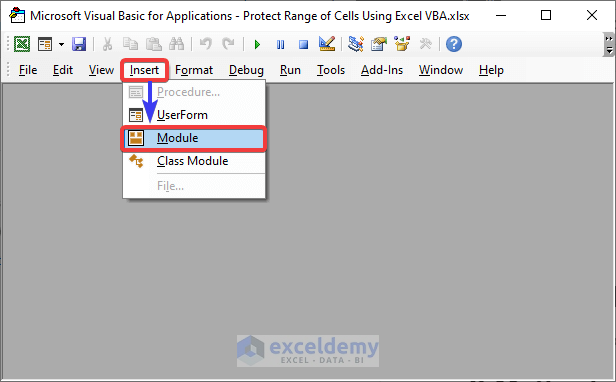
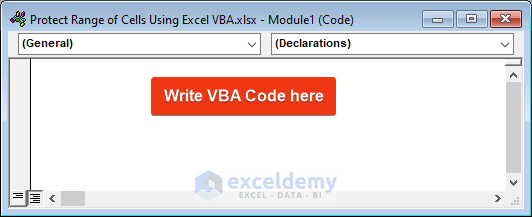
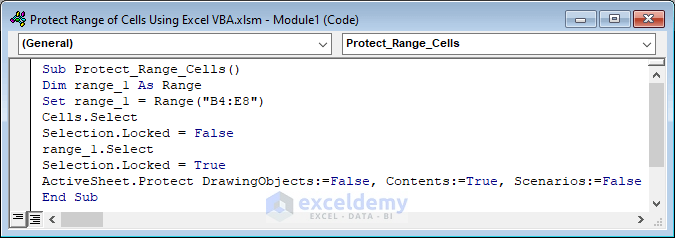
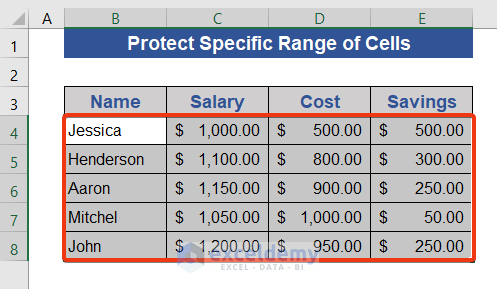
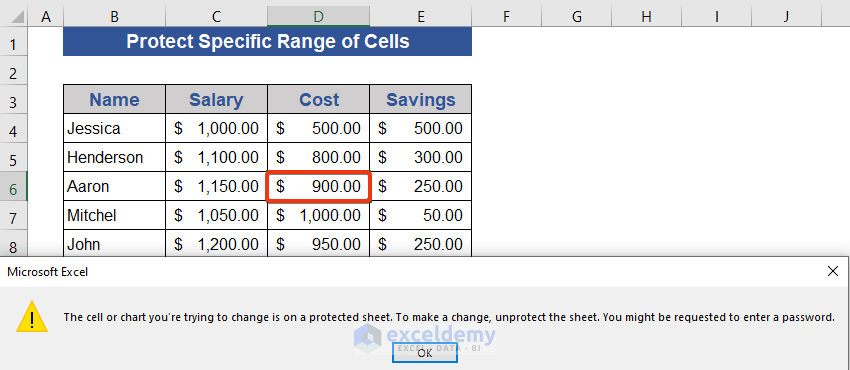
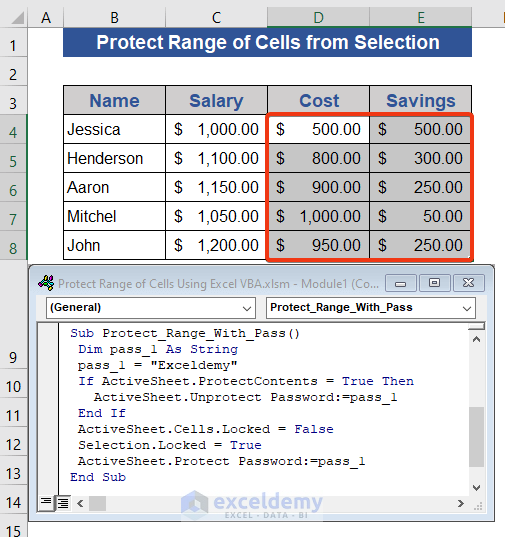
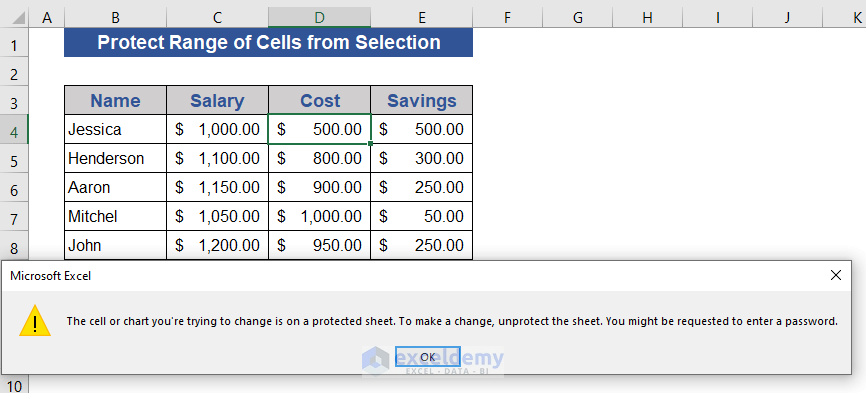
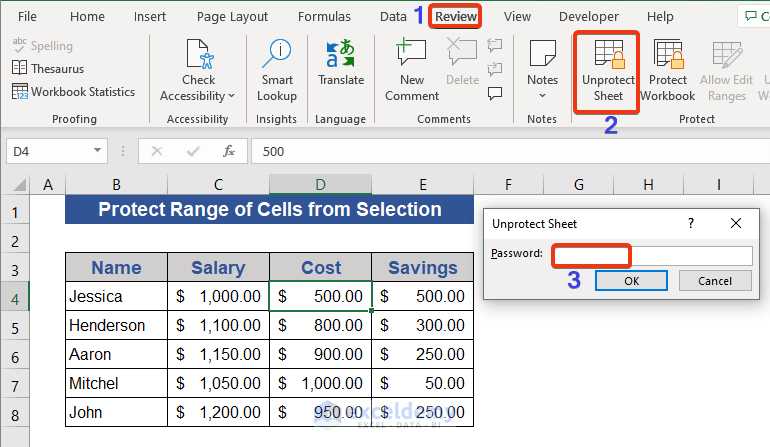
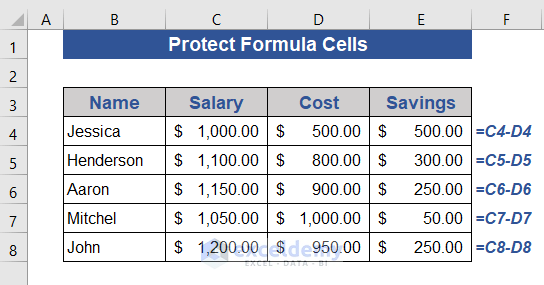
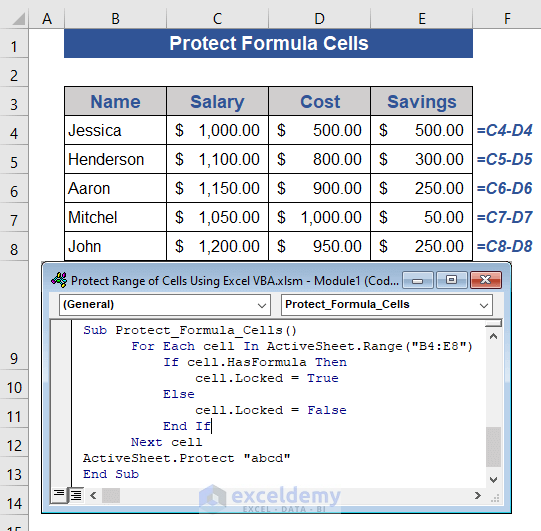
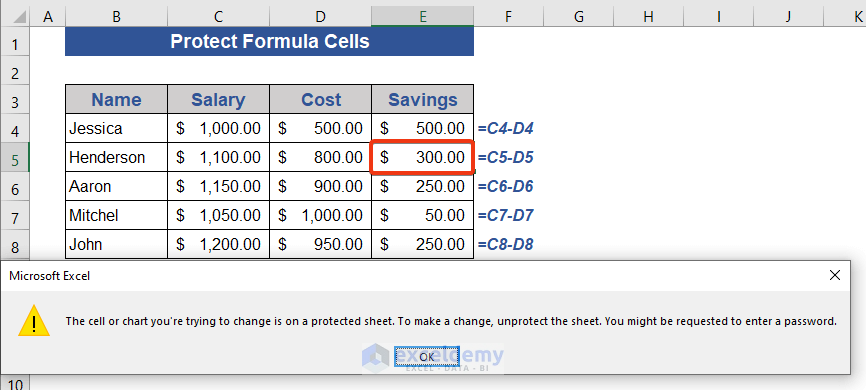



Hi,
I am wanting to make a log (using Excel) for Shift Supervisors that they can password lock their entries. Can more than 4 individuals use their own password to lock their range of cells using VBA?
Dear Tom,
Thanks for reading our articles. Here, you queried that you want an Excel sheet based on VBA to input values for 4 users in separate specified range. Those cells are locked with different passwords for each user.
Here, we have set User 1 with range B5:C10 and password: passuser1, User 2 with range E5:F10 and password: passuser2, User 3 with range H5:I10 and password: passuser3, User 4 with range K5:L10 and password: passuser4.
Based on the above information our VBA code will be as follow.
• When you double-click on any cell specified for any user a window named Unlock Range will pop-up. Insert the password and click on OK to edit the range of the user.
• But if you click on any cell that is not associated with any user then you will get a warning.
We can also unprotect the whole using password: 1234.
Regards
Alok